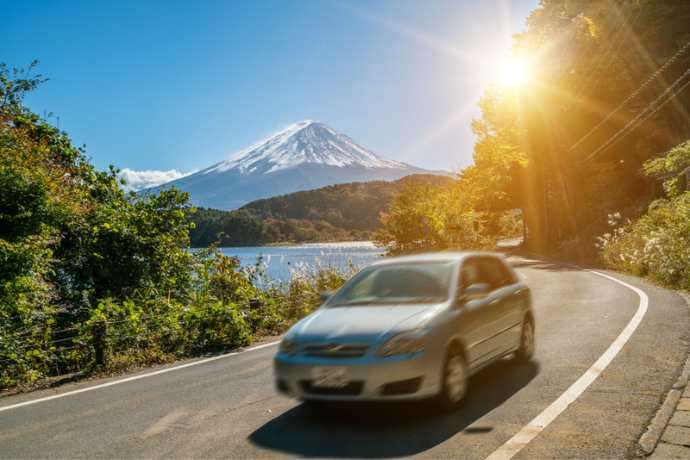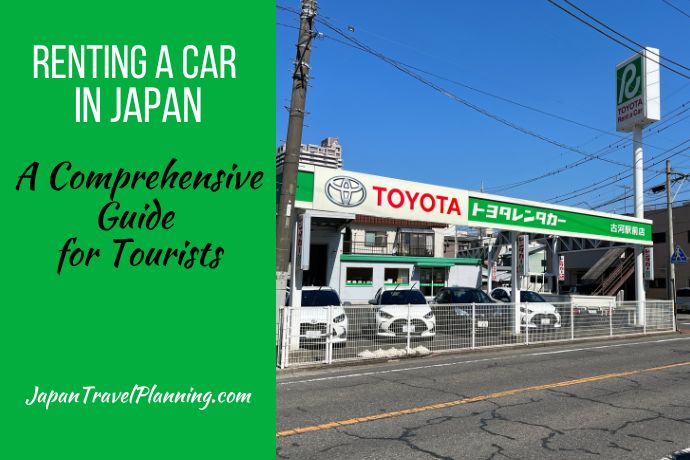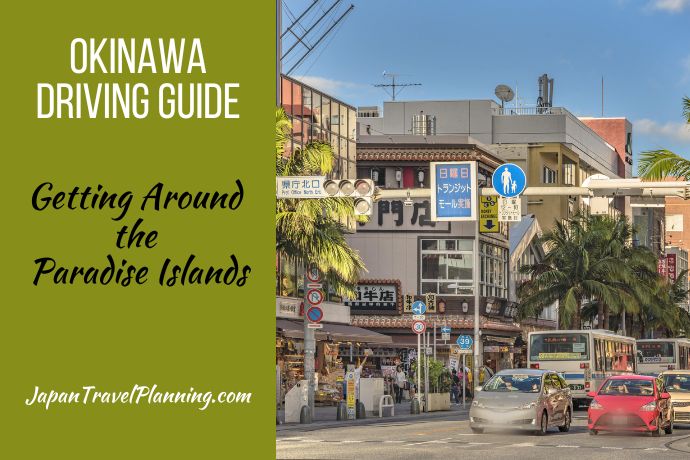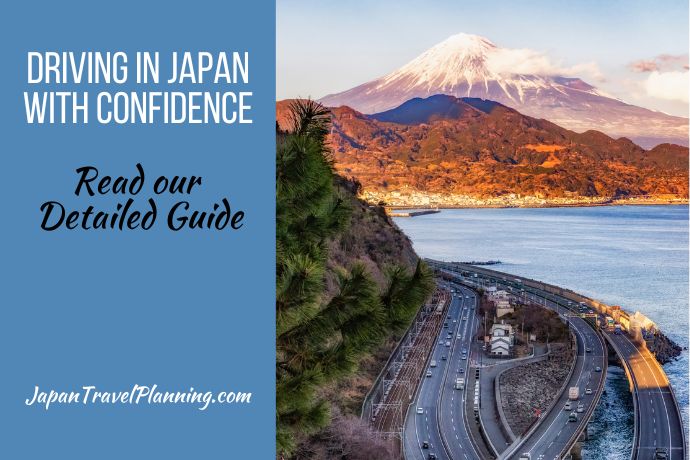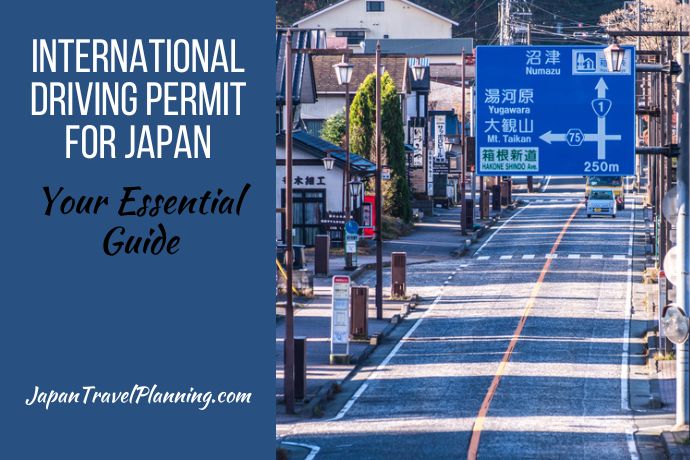Drivers in Japan have a lot to think about. The traffic rules in Japan are detailed and full of exceptions. The level of detail makes it hard to remember every little thing, and even Japanese drivers have trouble keeping all the small details in mind.
In addition, drivers often prioritise relations with other drivers over the driving laws in Japan. When driving in Japan, it’s often good practice to ‘go with the flow’. Do like everyone else, and you are much less likely to make a costly mistake – or cause an accident.
- Easy comparison of multiple car rental provider options using ToCoo!
- Use coupon code K49O12 to get your 1,000 yen discount
- ToCoo! is a local Japanese car comparison site that has the most options available
- Clear description of included protection and excess
- Good cancellation options
- Child seats, GPS, electronic toll cards, second driver and more are available as add-ons
Traffic Rules in Japan
Many Japanese driving rules are easy to understand and crystal clear, such as what to do in front of a stop sign, how to handle your mobile phone when driving, and if you are allowed to drive when drunk. This means that, when driving in Japan, you will find that the driving knowledge from your home country is usually sufficient until suddenly you run into one of the local rules which nobody outside Japan has heard of.
There are other rules that are almost incomprehensible to non-Japanese. Examples of less easy to understand rules include how to behave in crowded intersections, what to do when confronted with a railroad crossing, when to honk or signal with your headlights, and how to smoothly let in traffic.
This article has been written to help you navigate through the complexities of Japan traffic rules. It covers a wide range of topics, including:
- The driving age in Japan;
- International Driving Permits;
- Which side of the road to drive on;
- Speed limits;
- Driving under the influence;
- The use of seat belts;
- The use of cell phones and other devices;
- Signalling using the car horn;
- Right of way;
- What to do in the event of an accident; and
- Some of the more complicated rules that you should be aware of.
Join the Japan Travel Planning Facebook Group or Discord Server
You are also welcome to join our Japan Travel Planning Facebook Group and our Japan Travel Planning Discord Server – they are great resources to enable you to ask questions about your upcoming trip to Japan!
Disclaimer: This article contains affiliate links. If you book after clicking on one of these links then we may receive a small commission at no extra cost to you.
Driving Age in Japan
In Japan, you can start practising and take your driver’s licence from the day you turn 18. But the driving laws in Japan allow you to start earlier – if you are driving a light motorcycle or a moped. For all other vehicles, the lowest age is 18.
While the Japan traffic rules are very firm about when you can start driving, the rules about when you have to stop are much fuzzier. Elderly drivers are a big problem on the roads, and they cause a disproportionate percentage of accidents. However, in many parts of Japan, they would not be able to take care of themselves without a car since the distances to shops and clinics can be quite considerable.
This means that while the Japanese driving rules do not set a specific cutoff date for the age of drivers, in practice, most seniors will eventually not get their driver’s licence renewed for medical reasons. You have to pass a vision and hearing test when your licence is renewed every five years. If you see cars with a sticker that looks like a teardrop, or a flower with four petals, be aware that the driver of the vehicle is over 70 years old.

International Driving Permit/Japanese Translation of License
To drive as a foreigner in Japan, you need an International Driving Permit. You get it from the police or your local automobile organisation. However, if you are from Germany, France, Switzerland, Belgium, Slovenia, Monaco or Taiwan, you will need an authorised translation of your driver’s licence. Check with your local Japanese embassy to make sure you are following the traffic rules in Japan regarding driver’s licences.
Japan Driving Side
As with about 30% of the world’s population, the Japanese drive on the left-hand side of the road and there are no exceptions to this. Most of the countries that drive on the left are former British colonies, including India, South Africa, Australia and New Zealand. However, this reason does not apply to Japan. It has been the practice in Japan for hundreds of years (back to the Edo period) for traffic to keep to the left, and this practice continued after the advent of cars.
Japan Speed Limits
Japanese roads are a confusing plethora of speed limits. The Japan rules of the road require the allowed driving speed to be posted at the side of the road on a small round sign with a red rim and white background. As there are no other round white signs with numbers on them, it is hard to mistake the speed limit signs for something else.
The lowest speed limit you are likely to encounter is 30 kilometres per hour (18.6 miles per hour). It applies in residential areas and in particular, in front of schools. If you are in a residential area, the speed limit is probably 30 despite no signs being visible anywhere. The traffic rules in Japan often apply in zones, and in that case, the signs will only be posted at the entrance and exit from the zone.
Outside the residential areas, on main roads, different speed limits apply according to the driving laws in Japan. Typically, in cities, the speed limit is either 40 or 50 kilometres per hour (25 to 31 miles per hour). The traffic rules in Japan allow for the speed limit on ordinary roads to be up to 80 km per hour, but this is very uncommon. 60 or 70 km per hour (37 or 43 miles per hour) is more common. The normal speed on major roads outside populated areas, according to the traffic rules in Japan, is 60 kilometres per hour.
On the expressways, the speed limits are much higher – starting at 80 kilometres per hour, and going up to 120 kilometres per hour, although that is only permitted in some limited areas. The normal speed on the expressways, according to the traffic rules in Japan, is 100 kilometres per hour, although this can be changed depending on traffic and weather conditions. And when it is changed, it can be done at a moment’s notice since the speed limit signs on Japanese highways use LED lights to show the speed limit.
Don’t get surprised if other cars move faster. Even though it is not spelled out anywhere in the traffic rules in Japan, the smooth flow of traffic is more important than the posted sign limit (except in 30 zones). When that happens, go with the flow, not the signs.
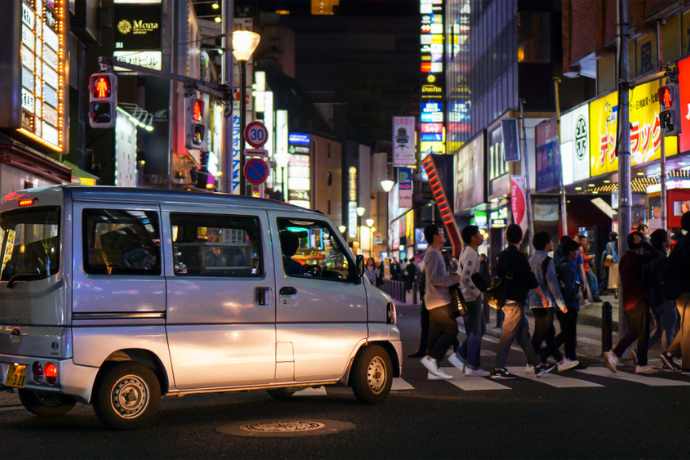
Driving Under the Influence of Alcohol in Japan
Japan has a zero-tolerance policy for drunk driving. You are no longer allowed to drive if you have a blood alcohol concentration (BAC) of 0.03 or above, and the limit for driving under the influence is 0.3 mg in 1 ml of blood or 0.15 ml in 1L of breath.
The limits for any other drugs are even stricter – since Japan has very harsh rules regulating the possession of controlled substances. If you are taking any kind of drug and are caught driving, you will lose your licence on the spot and go straight to jail. The driving laws in Japan make no exceptions for prescription medication, so if you are taking medicines that may make you drowsy, be sure not to do it before driving.
Wearing of Seat Belts in Japan
The traffic rules in Japan say everyone in the car should wear seat belts. As usual in Japan, there are exceptions, although they are much fewer than in other areas of the Japan road rules.
The first exception in the Japanese rules of the road is that you do not have to wear your seatbelt when you are moving the car in a private parking lot or in another private space.
The second exception, according to the driving law in Japan, concerns children. If your child is so sick they can not sit up, they are allowed not to use a seatbelt when you are taking them to the doctor. But those are the only exceptions – otherwise, you (and your children) are required to wear seat belts.
Child Safety Seats in Japan
According to the traffic rules of Japan, all passengers must wear seatbelts – including children. That means children have to be in child seats. Small children, who can not sit by themselves, need to be in bassinet seats, and as they get older, according to the rules of the road in Japan, they are supposed to sit in their own child seats.
The driving laws in Japan are that children under the age of six should be in child seats – but after that, they have to use booster seats until they can wear seat belts properly. Even though the Japanese driving rules say that you have to use booster seats until you are twelve, this only applies if you can not use seatbelts on your own. If the child is larger, they frequently are able to use seat belts without cushions long before 12 years of age.
One thing that the Japanese driving laws clearly prohibit, however, is the use of seatbelt extenders. Anything that interferes with the normal operation of seatbelts, with the exception of child seats approved by the Japanese traffic authorities, is strictly prohibited according to the driving laws in Japan. Even if you are concerned that you may be too big for the Japanese seat belts to fit, this is never a problem in newer Japanese cars.
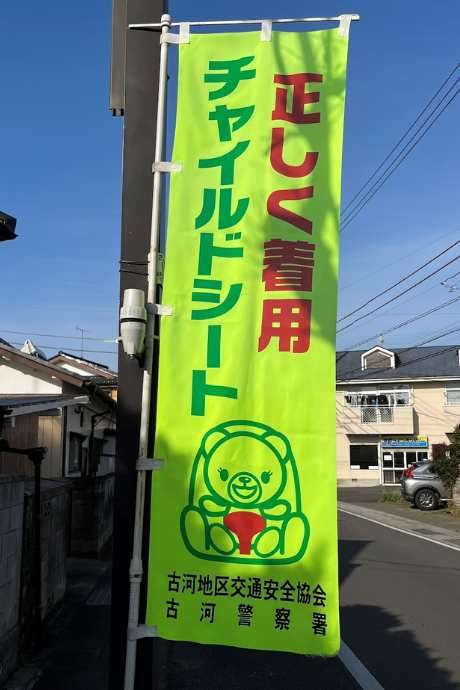
Use of Cellphones, Headphones and Other Listening Devices When Driving in Japan
One of the offences against Japanese driving rules is the use of cell phones while driving. New rules came into effect in December 2019 with very harsh penalties.
In the tight quarters of Japanese cities, you do not even need the driving laws in Japan to tell you that you should not do anything distracting. The narrow streets, the many obstacles, the sudden appearance on the road of pedestrians and cyclists, all of this means talking on the phone, not to speak of looking up things or reading emails, is an accident waiting to happen.
Since the Japan driving rules prohibit you from using your mobile phone at any time while driving, you often see people who stop alongside the road (where there is space) and answer their mobile phones. You can use a phone hands-free while driving. However, some cities have their own rules on this, so you are better off pulling over and parking before making a call.
If you happen to be in the same situation, find a place where stopping is allowed, turn tightly to the side, and then turn on the hazard lights flashing all around the car so that other cars can see you are stopped. Then take the call.
If you are stopping to look for directions, make sure to look for enough directions so that you do not have to stop again for a while. Remember to stop the hazard lights and turn on the right turn signals when you are moving out into the traffic, and look carefully for other cars coming behind you.
Places where the roads are wide enough for someone to stop on the shoulder are rare in Japan, so you need to make sure stopping is possible and permitted by the traffic rules in Japan before pulling over. This is why you need to be able to understand the car navigation system.

Signalling and Use of Car Horn in Japan
Japan is one of the quietest countries in the world, and causing others inconvenience by making unwarranted noise is frowned upon. While the Japan traffic rules do not explicitly forbid the use of the horn in populated areas, the use is strictly circumvented to necessary signalling.
Of course, what is considered necessary may vary, but dangerous behaviour by other road users is one time the driving laws in Japan allow you to use the horn. Another, which may surprise you if you ever visit Ibaraki prefecture, is to give a very brief honk of the horn to thank other drivers for being considerate to you.
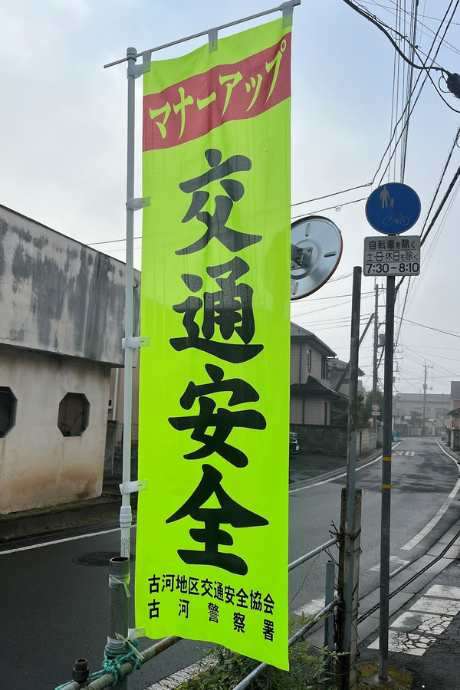
When to Use Your Car Horn in Japan
There is one instance when the traffic rules in Japan require you to use the horn, and there is even a road sign requesting you to signal. When driving in the mountains, the Japan road rules require you to signal when you approach a hairpin curve, as traffic from the other direction can not see you coming.
There is one more occasion when using the horn to signal is allowed and expected according to the driving laws in Japan, and that is when the fog is so dense that you literally can not see the next car in front of you or maybe even not the one in front. Then the horn signals come in handy.
Overtaking and Passing in Japan
If there are no signs prohibiting overtaking and no solid centerline on the road, you can overtake other cars according to the traffic rules in Japan. But that is more uncommon than you would expect, except on the major roads. You will more often be in situations where you have to pass someone stopped at the side of the road or stopped to turn in the middle of the road.
When that happens, the driving rules of Japan allow for you to pass – if there is room. You often see cars waiting for someone to turn across the other lane since there is no room to pass on the inside; the shoulders are hardly wide enough for a bicycle, and the ditches are deep enough for your car to get stuck. Do not try to pass unless you are sure you can do it.
When you do have to pass someone parked at the side of the road, make sure there is no traffic in the oncoming lane, as you will have to turn into it briefly. If the other car makes an effort to move to the side to let you pass, thank them by signalling with the hazard lights, a couple of quick winks is enough. It may not be part of the traffic rules in Japan, but it is common politeness and appreciated by other drivers.
Right of Way When Driving in Japan
When it comes to ‘right of way’, the strongest party has to yield. That is the principle behind the Japanese rules of the road. Especially when it comes to determining who has the right of way.
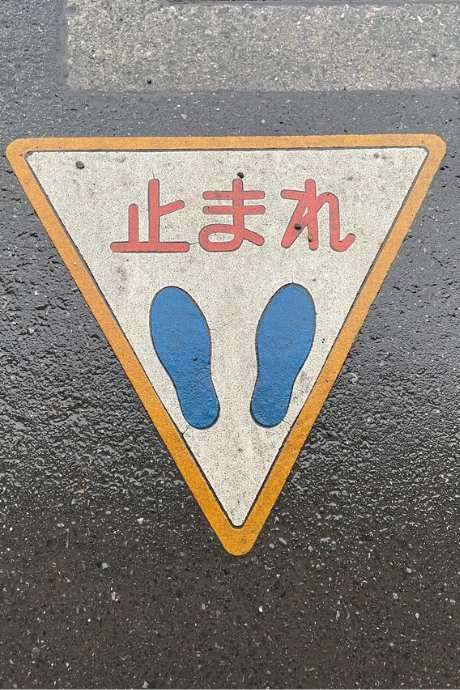
Right of Way in Japan – Pedestrians and Bicycles
In Japan, pedestrians have the right of way – always. As a driver, according to the traffic rules in Japan, you have to give way to pedestrians, even if they are walking slowly, walking diagonally, or missing the pedestrian crossing/crosswalk completely.
According to a recent update of the driving law in Japan, you also have to stop and let pedestrians waiting at a crosswalk cross the road.
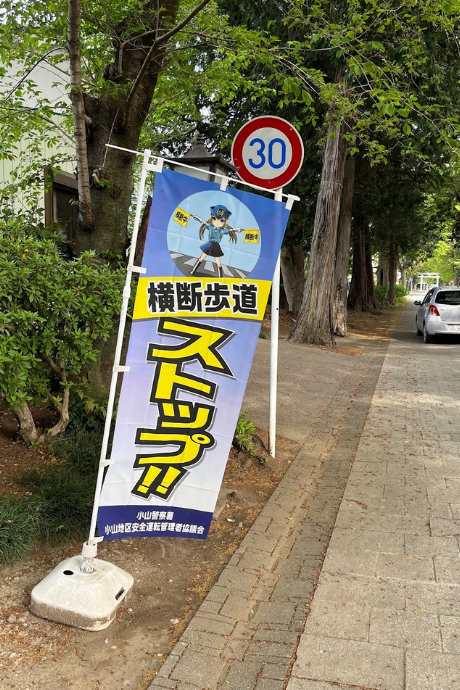
Bicycles are pedestrians with wheels, although the rules of the road in Japan require them to ride on the road – unless (with one more exception to the Japanese driving rules) they are elderly or very young. The driving laws in Japan allow the very young or elderly to ride on the pavement. If the sidewalk is congested, they can go out on the roadside.
One more concern is that according to the traffic rules in Japan, it is allowed for bicycles, motorcycles, and scooters to drive to the left of cars. As a driver, you have to get used to throwing a quick look backwards when waiting for a green light. You also need to be extra careful when turning left so you do not collide with cyclists and motorcycles coming from your left.
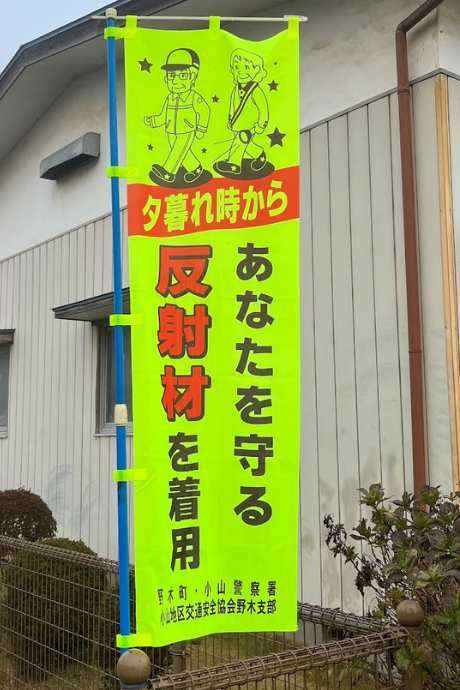
Right of Way in Japan – Intersections
At intersections, the rule is very simple, although, of course, the traffic rules of Japan express it somewhat differently. The rule is “anyone going straight has the right of way”, which means that if you are turning right, you have to wait for all cars going straight to pass.
Traffic lights, as a rule, are staggered so at least a few cars turning right will be able to pass before the next direction is let through.
If you are passing straight through the crossing, you still have to keep an eye out for pedestrians, who may be rushing to cross while there is a green light, although the traffic rules in Japan actually say they are to wait and cross using the crosswalks.
Also, watch out for cyclists and motorcycles, who may be passing on the sidewalk side and then take the opportunity of the turning light to make a right turn before other traffic gets going,
What to Do in the Event of an Car Accident in Japan
Accidents are serious business according to the driving laws in Japan. But there are two levels of severity. The traffic rules in Japan distinguish between two types of accidents: With a person harmed and without harm to a person. An example of the latter kind is when you accidentally scratch or bump into another car.
When a person is involved, even if there is no apparent harm, things become more serious. In both cases, you need to call the police; but while the officer will let you go after filling in a report in the first case if you admit it was your fault, things are different in the second case.
For an accident without damage to a person, the insurance companies will take over once they receive the police report. For accidents involving a person, the driving laws in Japan, in principle, require the case to go to court (although the police can make an administrative decision in less severe cases).
Calling the police (the number is 110, and there is no foreign-language service) actually has second priority to calling an ambulance and giving first aid according to the traffic rules in Japan. The number for an ambulance is 119, and there is no foreign-language service. The ambulance paramedics are skilled in first aid but will call once they leave the fire station to get more information about the case.
Always remain at the accident scene until the police tell you that you are free to go. Otherwise, you may be breaking some other laws. And a traffic accident is bad enough.

Other Rules that Might Cause Problems for Foreign Drivers in Japan
Once you have embraced driving on the left and learned to handle bicycles and motorbikes coming up on the inside, the traffic rules in Japan should not cause any problems. With a few exceptions.
For one, you have to stop in front of a railroad crossing – and roll down your windows to listen for oncoming trains. Every car has to stop, regardless of whether there are barriers or not. This rule is more strictly enforced than most of the other driving laws in Japan, and the police often lie in wait to catch anyone offending.
Driving Custom and Practice in Japan
What is most likely to cause problems for visiting drivers are not those found in the traffic rules in Japan. It is the customs which make traffic flow smoothly.
Japanese drivers will adjust their speed to each other, regardless of the speed limit and other traffic rules in Japan. But that is not the only time drivers disregard the traffic rules in Japan in favour of the cars closest to them.
When a car is waiting in a parking lot to turn out into traffic, the cars on the road will stop and let them in – but only if they are facing a red light. If they can roll on through the green light, they will not stop; if they have to stop anyway, they will stop and let the waiting car in.
Something else that may surprise you, at least if you are driving in the mountains or the expressways, is how aggressive motorcycle drivers can be. Touring is very popular in Japan if the weather is nice enough. Also, while Japan has worked hard to stamp out motorcycle gangs, you will still occasionally see them in the countryside. You can also get the impression that ordinary motorcycle drivers have inherited the disregard for the traffic rules in Japan.
- Easy comparison of multiple car rental provider options using ToCoo!
- Use coupon code K49O12 to get your 1,000 yen discount
- ToCoo! is a local Japanese car comparison site that has the most options available
- Clear description of included protection and excess
- Good cancellation options
- Child seats, GPS, electronic toll cards, second driver and more are available as add-ons
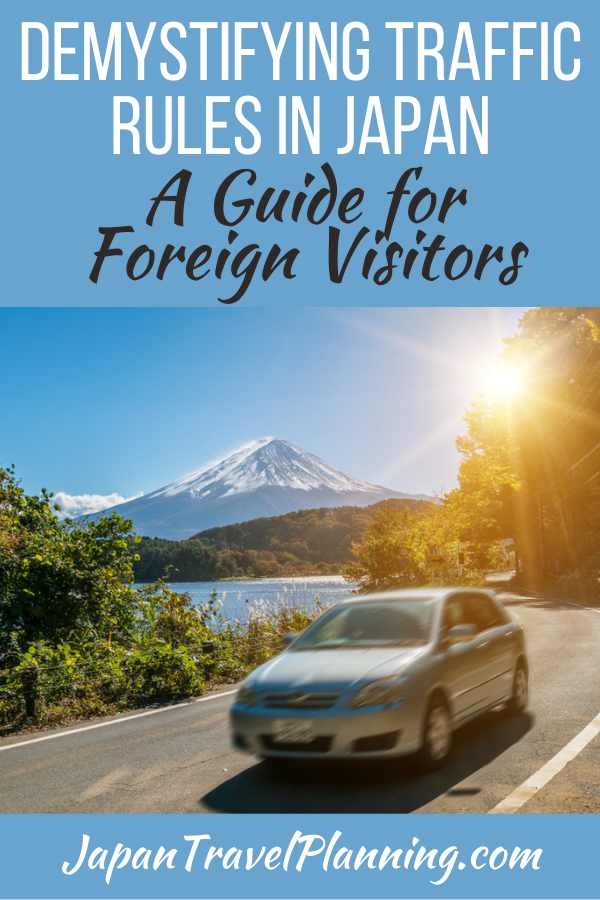
You may also like:
Renting a Car In Japan: A Comprehensive Guide for Tourists
Renting a Car in Okinawa: Explore Japan’s Paradise
Driving in Okinawa Guide: Getting Around the Paradise Islands
Driving in Japan with Confidence: Read our Detailed Guide
International Driving Permit for Japan: Your Essential Guide
Japan Traffic Lights Guide: More Than Red, Yellow, and Green
Join the Japan Travel Planning Facebook Group or Discord Server
You are also welcome to join our Japan Travel Planning Facebook Group and our Japan Travel Planning Discord Server – they are great resources to enable you to ask questions about your upcoming trip to Japan!
Disclaimer: This article contains affiliate links. If you book after clicking on one of these links then we may receive a small commission at no extra cost to you.

